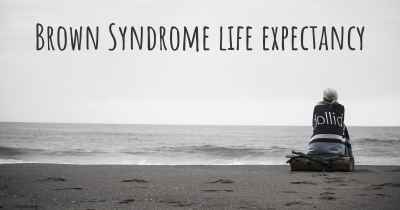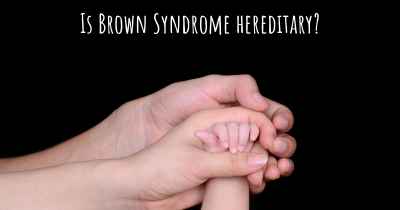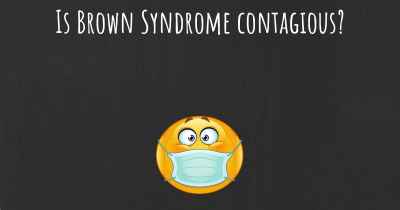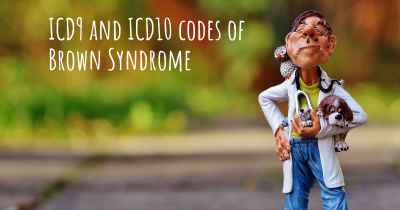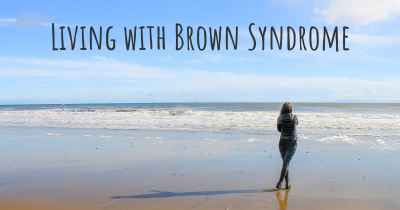Which are the symptoms of Brown Syndrome?
See the worst symptoms of affected by Brown Syndrome here
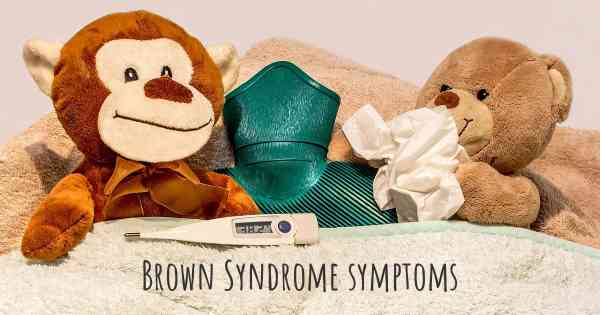
Brown Syndrome, also known as superior oblique tendon sheath syndrome, is a rare eye condition that affects the movement of the eye. It is characterized by limited or restricted upward movement of the affected eye, specifically when looking inward or towards the nose. This restriction occurs due to a malfunction or abnormality in the superior oblique tendon, which is responsible for controlling the eye's movement.
The symptoms of Brown Syndrome may vary from person to person, but the most common signs include:
- Limited upward gaze: The affected eye has difficulty moving upward, particularly when attempting to look inward or towards the nose. This restriction is often more noticeable when the eye is in an adducted position.
- Head tilting: To compensate for the limited upward movement, individuals with Brown Syndrome may tilt their head backward or to the opposite side of the affected eye. This head tilt helps align the eyes and improve vision.
- Diplopia (double vision): In some cases, individuals with Brown Syndrome may experience double vision, especially when looking in certain directions. This occurs due to the misalignment of the eyes caused by the restricted movement of the affected eye.
- Eye strain or discomfort: The limited movement and misalignment of the eyes can lead to eye strain or discomfort, particularly when trying to focus on objects located above or below the line of sight.
- Squinting or closing one eye: To alleviate the double vision or improve clarity, individuals with Brown Syndrome may squint or close one eye. This action helps reduce the visual confusion caused by the misalignment.
Brown Syndrome can be present at birth (congenital) or develop later in life (acquired). In congenital cases, the condition is often noticed during early childhood, while acquired cases can occur due to trauma, inflammation, or other underlying eye conditions.
Diagnosis of Brown Syndrome involves a comprehensive eye examination, including:
- Medical history: The ophthalmologist will inquire about any symptoms, their duration, and any previous eye conditions or injuries.
- Visual acuity test: This test measures the clarity of vision using an eye chart.
- Ocular motility examination: The eye doctor will assess the movement of the eyes in different directions to identify any restrictions or abnormalities.
- Slit-lamp examination: This examination allows the ophthalmologist to examine the structures of the eye, including the superior oblique tendon.
- Imaging tests: In some cases, imaging tests such as magnetic resonance imaging (MRI) or computed tomography (CT) scan may be recommended to evaluate the structures of the eye in more detail.
Treatment options for Brown Syndrome depend on the severity of the condition and its impact on vision:
- Observation: In mild cases where the restricted movement does not significantly affect vision or cause discomfort, no treatment may be necessary. Regular monitoring by an ophthalmologist is recommended.
- Orthoptic exercises: These exercises aim to improve eye coordination and strengthen the eye muscles. They may be recommended to individuals with mild to moderate Brown Syndrome.
- Prism glasses: In some cases, specially prescribed prism glasses can help alleviate double vision and improve visual alignment.
- Surgery: Surgical intervention may be considered for severe or persistent cases of Brown Syndrome. The procedure aims to release or adjust the superior oblique tendon to improve eye movement and alignment.
It is important for individuals experiencing symptoms of Brown Syndrome to consult an ophthalmologist for a proper diagnosis and appropriate management. Early detection and intervention can help minimize the impact of the condition on vision and overall eye health.
